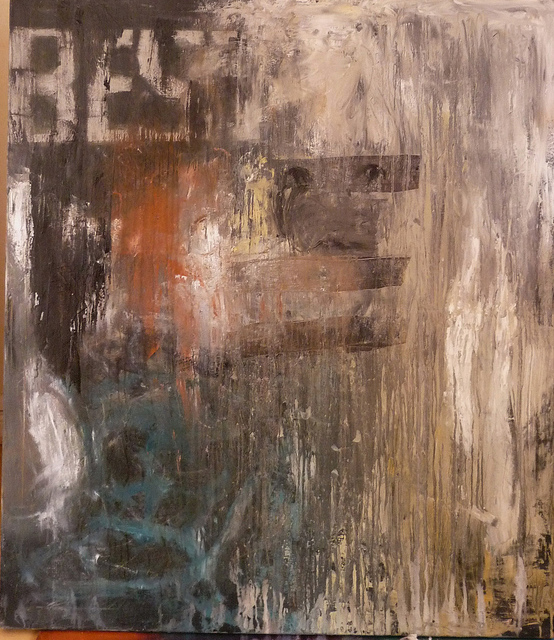Last year, the media focused much attention on the Smithsonian’s decision to pull the David Wojnarowicz video, “A Fire in My Belly,” from an exhibition at the National Portrait Gallery in Washington, D.C., entitled, “Hide/Seek”. The museum apologized for the piece’s contents after a group of Republican representatives and the Catholic League demanded the removal of the video. Part of “the first major museum exhibition to focus on sexual difference in the making of modern American portraiture”, the piece depicted the suffering of an HIV positive man along with ants crawling on a crucifix. Representative Jack Kingston of Georgia called it “in your face perversion paid for by tax dollars”.
This scenario is far from unique, as the issue of censoring sex (alongside feminism and women artists in general) in museums has a long and contentious history both in the United States and abroad. In the late 1980s, the National Endowment for the Arts (NEA) engaged fierce battles about whether to fund so-called obscene shows, often equating obscenity with explicitly gay and lesbian content (e.g., Robert Maplethorpe’s photography). Museums like the Chicago Art Institute and the Metropolitan Museum of Art in New York City have both battled over the morality and ethics of censoring sex in the museum (John E. Semonche, Censoring Sex: A Historical Journey Through American Media). Greek vases and objects depicting explicit sexual acts have been deemed unfit for children’s viewing and have been removed from major museums throughout the world. The National Museum of Erotica in Canberry, Australia shut down over controversies surrounding its explicit portrayal of sexual artifacts.
So how might this relate to the menstruating body? This week, I visited one of my favorite museums in the world—the Heard Museum of American Indian Art and History in Phoenix, Arizona. They had several exhibits revolving around family life, ritual, and celebrations of “coming of age” among indigenous cultures in the Southwest. One exhibit featured paintings of ceremonies practiced among Native American communities of the Southwest. Another exhibit on Apache life featured several cases of clothing and text dedicated to women’s initiation into womanhood following the onset of puberty. Notably, the word menstruation or any depiction of women’s menstrual blood were entirely absent from both of these exhibits. Discussions of preparation of food, flowers, and clothing by elderly members of the girls’ communities were featured prominently, along with the significance of women learning how to transition to womanhood. Almost certainly, this ritualized process revolved around the onset of women’s menstrual cycles, yet no mention of women’s menarche occurred. I wondered: Has the menstruating body suffered from collateral damage of censoring sex? Do we associate all aspects of the (leaky, “disgusting”, abject) female body with the “sinful” and “harmful-to-children” rhetoric of sexually-explicit museum materials? When men’s “powerful” ejaculations (Jackson Pollack!!) and phallic powers are celebrated in full force, why do women’s cycling bodies hold such a taboo place in museum culture? What would it mean if menstruation held a more prominent place in museums in general?
Taboos surrounding the entrance of menstruation into museums continue in full force. Though a few radical feminist performance artists have featured work on menstruation (see Linder Sterling’s menstrual jewelry, or Mako Idemitsu’s 1973 piece, What a Woman Made featuring photos of tampons), the normally edgy and forward-thinking art world has yet to fully recognize menstruation as a valid subject of interest. The backlash against the Museum of Menstruation and Women’s Health (MUM), once located in Carrollton, Maryland and now featured only online, reveals just how much difficulty the public has accepting menstruation as a valid subject of analysis. In a 2007 article discussing the “10 Most Bizarre Museums”, MUM is listed alongside the Toilet Museum, the Voodoo Museum, the Museum of the Penis, and the Burger Museum. In another article on “The Seven Most Horrifying Museums on Earth”, MUM takes company with museums on child mummies, psychiatric patients, ventriloquism, fetuses in jars, and ancient phalluses. Harry Finley, the founder and curator of MUM, said in a 2010 interview, “[Menstruation] is not a polite thing to talk about in casual society. I’ve gotten so used to this now that it’s no big deal for me. But it is for other people. Especially coming from some guy. I really get, sometimes, a horrified reaction. I can tell by the stares and the silence. Even from liberal people. When I started the museum, I thought, ‘Oh boy, this would not bother them.’ But it still bothers basically everybody. Almost every reaction is negative. . . . I think a lot of it is the association of a male doing this. Like, what is his interest in this?”
The assumptions of deviance for a man interested in the history and cultural silences surrounding menstruation, or the assumption that menstruation cannot have an explicit place in the coming of age stories depicted in an exhibition on coming of age, both reveal just how far we have to travel with regard to menstrual acceptance, activism, and awareness. Somehow, the link between the “taboo” body and the “obscene” aspects of sexuality has grown stronger, almost invisibly, in the kinds of stories we tell about ourselves. This absence represents yet another calculated denial of the cycling body, of bodies that leak and shift and leave stains. I yearn to see depictions of the menstruating body featured prominently in the story of women, culture, and society. The censoring of these experiences, however unintentional, reduces and redefines women’s experiences of their bodies in ways that further alienate them from the power and cultural significance of menstruation.


